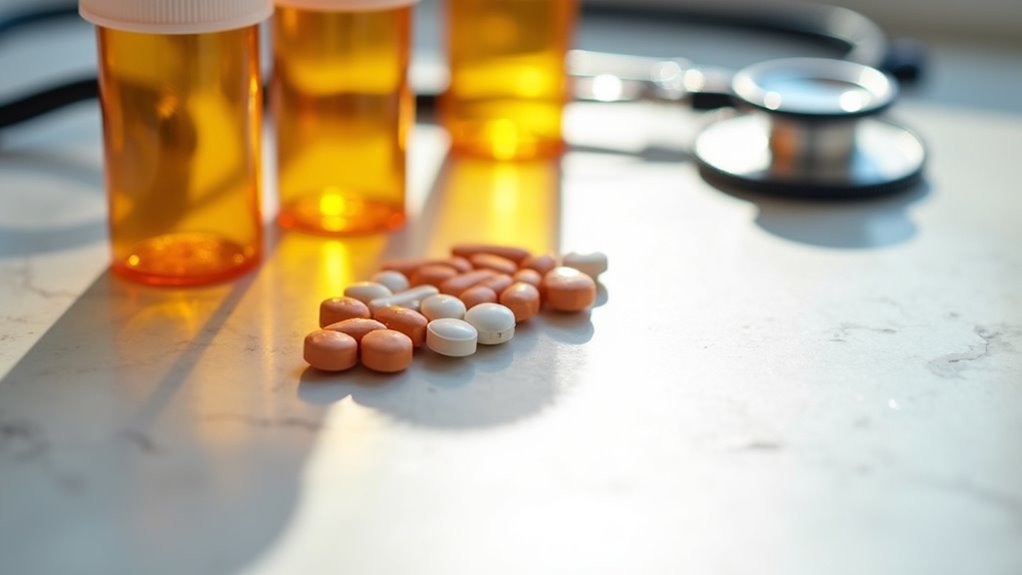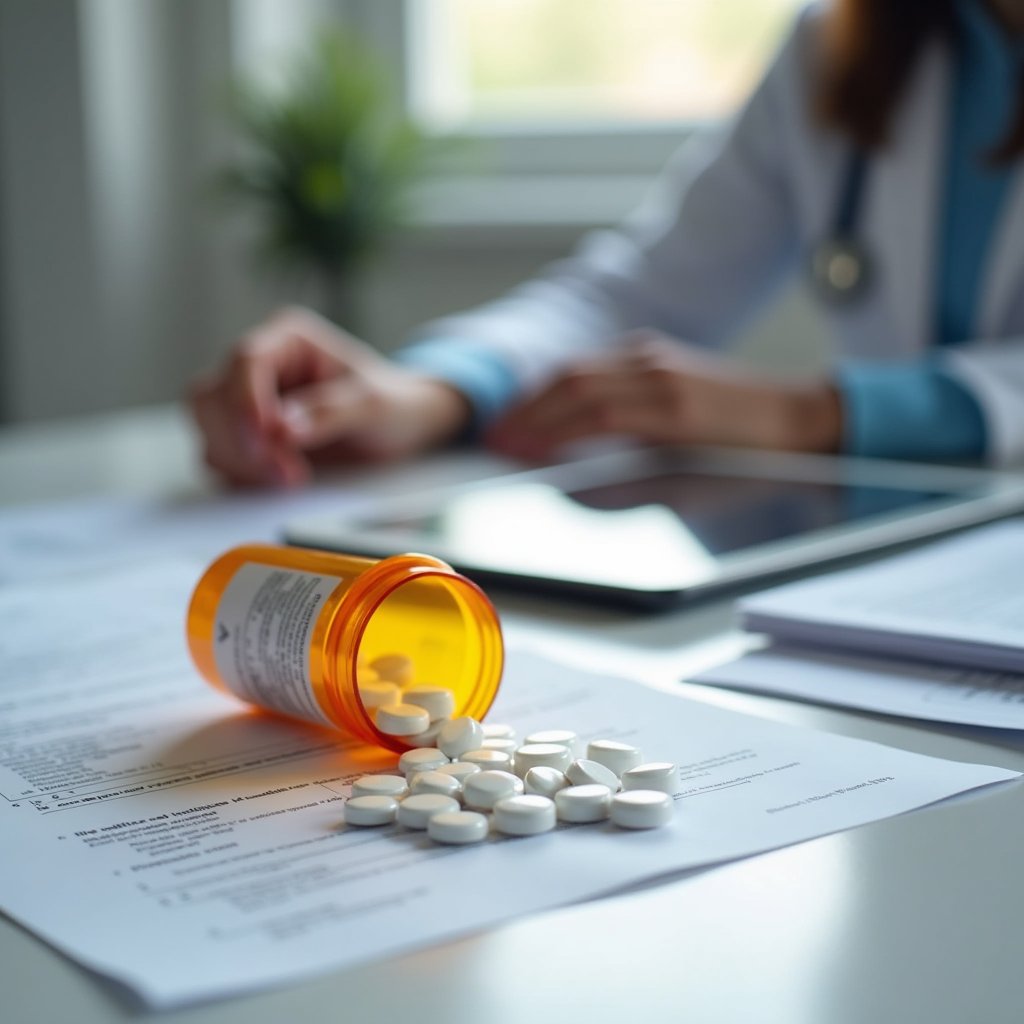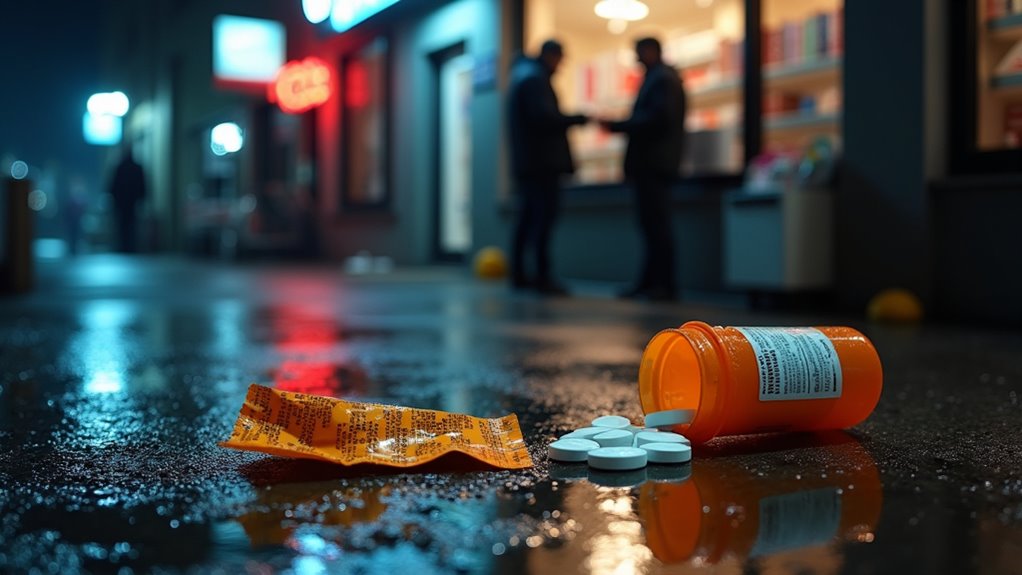Suboxone diversion remains a critical concern through 2025, with the market projected to reach $8.41 billion by 2030. You’ll find that key drivers include financial hardship, treatment gaps, and inadequate storage security. Recent regulatory changes allowing audio-only prescriptions have complicated monitoring efforts, while expanded telehealth access creates new vulnerabilities. Healthcare systems are implementing AI-driven detection systems and augmented protocols, though challenges persist in rural and vulnerable populations. Understanding the full scope of diversion patterns will reveal effective prevention strategies.
The Current State of Suboxone Market and Price Trends

While the global Suboxone market reached $6.16 billion in 2022, it’s projected to expand to $8.41 billion by 2030, driven by a steady 4.0% CAGR. You’ll find North America leading this growth, with the U.S. market expected to hit $3.15 billion by 2031, primarily due to high opioid addiction rates and established healthcare framework. Tablet formulations account for 51.5% of market share due to their ease of use and physician preference. The market sees significant growth potential as hospital pharmacies expand their distribution networks. Generic manufacturers are reshaping market dynamics, targeting a $3.89 billion share by 2030 through formulation innovations like abuse-deterrent sublingual films and long-acting injectables. The Asia Pacific region is emerging as a significant market player with its growing healthcare access and increasing demand for addiction treatment medications. Despite supply chain resilience challenges post-COVID-19, companies like Dr. Reddy’s and Sun Pharma continue dominating the U.S. setting. However, you’ll notice persistent barriers including high branded costs, regulatory hurdles, and social stigma impacting market accessibility, particularly in low-income regions.
Key Drivers Behind Patient Diversion Behaviors
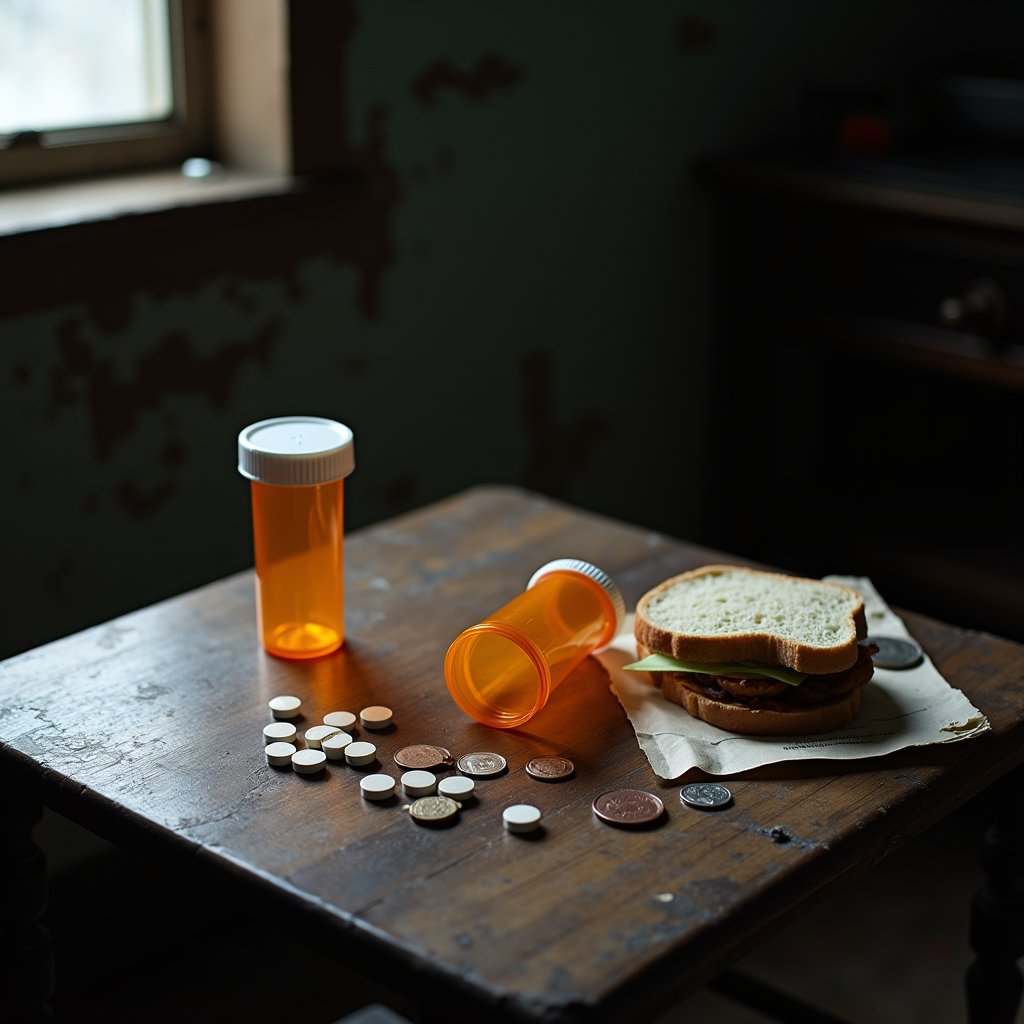
Market dynamics and pricing patterns directly influence patient behaviors around Suboxone diversion. Research reveals that patients’ motivations stem from complex socioeconomic factors rather than profit-seeking. You’ll find that inadequate overdose risk education and limited secured medication storage options create vulnerability, particularly among housing-insecure populations. Immediate-release opioids are commonly prescribed alongside long-acting medications in safer supply programs.
Financial hardship drives exchanges for basic necessities like food and shelter. Compassionate sharing occurs when helping others avoid dangerous withdrawal. Treatment gaps during dose titration lead to supplemental medication seeking. Recent regulatory changes allowing audio-only visits for buprenorphine prescriptions may impact monitoring capabilities. Lack of secure storage facilities increases risk of theft or loss. Limited access to alternative therapies creates pressure for informal distribution.
Understanding these drivers helps shape more effective interventions. While monitoring systems like PDMPs track prescribing patterns, addressing underlying structural weaknesses remains essential for reducing diversion behaviors and improving treatment outcomes.
Public Health Impact and Treatment Outcomes
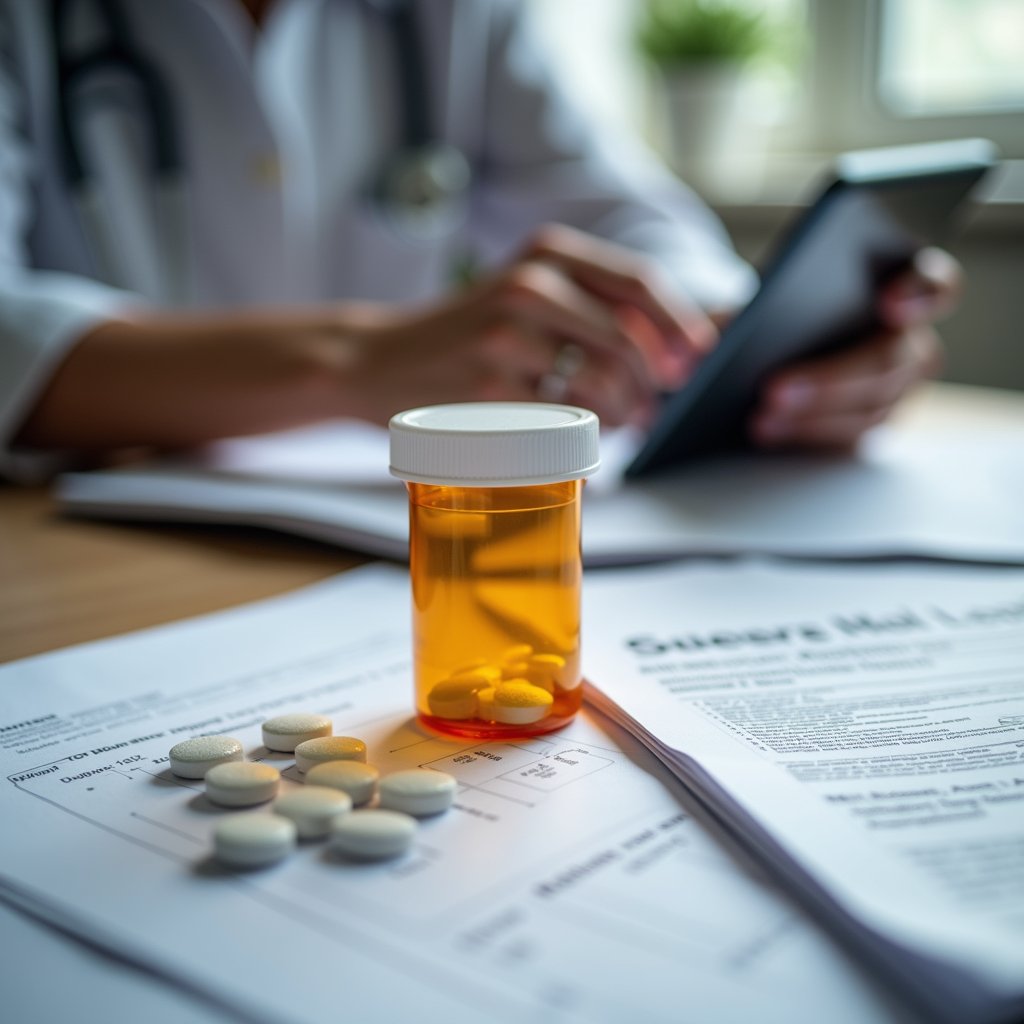
Multiple public health challenges emerge from Suboxone diversion, creating complex trade-offs between treatment accessibility and misuse prevention. You’ll find that higher buprenorphine doses correlate with improved patient retention, yet insurance restrictions and state policies often limit ideal dose, particularly among marginalized populations.
Data shows treatment outcomes suffer when guidelines restrict higher doses, while telemedicine expansion presents both opportunities and risks. You’re seeing significant gaps in research, especially among uninsured and Medicaid populations, making it difficult to fully assess diversion’s impact.
Treatment retention rates serve as key indicators, but incomplete overdose reversal data complicates evaluation efforts. The evidence suggests successful interventions must balance liberal prescribing practices with careful monitoring, while ensuring vulnerable populations maintain access to most suitable dosing regimens.
Regulatory Changes and Access Challenges
You’ll find significant shifts in telemedicine policies for Suboxone prescribing through 2025, with expanded audio-only consultations and removal of mandatory in-person visits creating new treatment pathways. Your ability to access these services remains constrained by provider shortages in rural areas and technological barriers among vulnerable populations.
While the streamlined documentation requirements reduce administrative burden, you must still navigate complex compliance protocols including mandatory PDMP checks and identity verification at dispensing. The extended regulations through 2025 provide continued support for telehealth-based addiction treatment services while permanent solutions are being evaluated.
Telemedicine Policy Shifts
Recent regulatory changes in telemedicine prescribing have fundamentally transformed buprenorphine access while implementing new safeguards against diversion. You’ll find that buprenorphine prescribing safeguards now include mandatory PDMP reviews and pharmacist identity verification checks, balancing accessibility with risk management. Continuity of care considerations have led to extended COVID-19 flexibilities through 2025, ensuring patients maintain stable treatment access during the shift. The implementation timeline has shifted as the final rule delay extends the transition period.
Audio-only consultations now permitted for initial prescriptions
Six-month initial supply allowance via telemedicine
Required in-person evaluations after the initial 6-month period
Integration of PDMP monitoring systems for prescription tracking
Practice limitations capped at 50% telemedicine prescriptions
These changes reflect a calculated approach to expanding treatment access while maintaining sturdy controls against potential diversion risks, particularly in underserved communities where telemedicine serves as a vital healthcare delivery method.
Cost vs. Compliance Barriers
Beyond telemedicine adaptations, complex economic and regulatory pressures now shape Suboxone compliance patterns. You’ll find patients facing stark choices between medication adherence and basic survival needs, with high branded drug costs forcing difficult trade-offs.
Dosage flexibility challenges emerge as providers balance individual treatment needs against diversion risks.
Clinician stigma concerns continue influencing prescribing decisions, while strict regulatory frameworks limit providers’ ability to adjust treatment plans. You’re seeing marginalized communities disproportionately affected by these barriers, with poverty and housing instability increasing vulnerability to medication loss or coerced sharing.
The intersection of cost pressures and compliance requirements creates a challenging dynamic where patients must navigate between maintaining prescribed regimens and meeting immediate economic needs, often compromising their treatment stability.
Understanding Different Types of Medication Diversion
Multiple forms of medication diversion plague healthcare systems, each exploiting unique vulnerabilities in the medication management chain. Through insider threat detection and staff education initiatives, healthcare facilities can better understand and combat these diversionary tactics.
Tampering schemes involve substituting medications with saline or other substances, often targeting controlled substances in central storage areas. Administration fraud occurs when healthcare workers pocket partial doses after claiming full delivery to patients. Prescription fraud utilizes prescribing authority to generate fraudulent scripts for personal use or distribution. Waste reporting manipulation involves falsifying documentation of unused medications to conceal misuse. Direct theft from storage facilities or patient supplies remains a persistent threat, particularly in outpatient settings with reduced oversight. The rise in travel clinicians has created additional challenges for maintaining consistent oversight of medication handling. Recent advancements in artificial intelligence solutions have shown significant promise in enhancing detection and prevention of these diversion methods. With a grade of A-, modern real-time monitoring systems have proven highly effective at identifying potential medication diversion incidents.
These methods require distinct prevention strategies and highlight the need for thorough monitoring systems.
Economic Barriers and Generic Drug Availability
The projected growth of the generic Suboxone market to US$3,889.9 million by 2030 signals increasing availability, yet persistent economic barriers create conditions that can incentivize diversion.
You’ll find that regional disparities in access and affordability, particularly in underserved areas, contribute to illicit market demand despite the presence of lower-cost generics. Insurance coverage limitations and high branded medication costs continue to propel some patients into unauthorized channels, even as generic competition expands. Using mail-order pharmacies can provide a more affordable and convenient option for many patients seeking treatment. The current absence of a generic sublingual tablet formulation further restricts affordable treatment options for many patients. Patients may find relief through savings programs and manufacturer assistance, though these options remain underutilized by many who could benefit from them.
Generic Market Growth Trends
As generic Suboxone approvals accelerate across global markets, significant economic barriers continue shaping availability and access patterns through 2025. Despite regulatory hurdles, you’ll see healthcare accessibility improving, particularly in emerging economies where generic adoption drives market expansion. The market’s projected growth to USD 19.25 billion by 2032 indicates strong momentum in the generic segment. Tablets and generics dominated the 2022 market share, setting precedent for future growth patterns.
Projections indicate a 4.0-4.1% CAGR through 2030, with generics expected to capture $3,889.9 million in market share.
- North American markets lead penetration rates due to favorable reimbursement policies
- Asia Pacific demonstrates substantial growth potential with improving healthcare infrastructure
- Sublingual formulations dominate sales projections at $3,383.6 million
- Generic approvals face persistent regulatory delays affecting treatment availability
- COVID-19 disruptions continue impacting production and distribution channels
These trends reflect the complex interplay between market demands and access challenges, particularly in low-resource regions where treatment needs remain high.
Cost Barriers Drive Diversion
While generic market expansion promises increased accessibility, persistent cost barriers continue driving Suboxone diversion through 2025. Studies show 29% of patients misuse their medications specifically to reduce financial burden, highlighting how affordability challenges directly impact medication adherence factors. The high costs of branded Suboxone, combined with insurance coverage gaps and tiered reimbursement models, create significant barriers to legitimate access.
Regulatory delays in generic approvals and distribution challenges maintain artificially high prices, while market monopolies by brand manufacturers further restrict competition. These economic pressures force vulnerable patients into survival-driven behaviors, including medication exchanges for basic needs like food and housing.
Under-titration during dose adjustments creates additional gaps that patients often fill through diversion networks, perpetuating cycles of misuse driven by financial hardship.
Policy Solutions and Future Prevention Strategies
Looking ahead to 2025’s evolving regulatory setting, all-encompassing policy solutions for Suboxone diversion focus on improved telemedicine prescribing protocols and strong prescription monitoring systems. Provider education programs must adapt to new DEA guidelines while prescription audit processes guarantee compliance across state lines.
Real-time PDMP integration with clinical workflows to detect suspicious prescribing patterns. Mandatory special registration requirements for multi-state telemedicine prescribers. The temporary rule extension through December 31, 2025 provides additional time to evaluate expanded telemedicine prescribing authorities. Amplified documentation protocols for 6-month supply authorizations. Cross-state prescription tracking systems to prevent duplicate fills. Strict verification procedures for patient identity and medical necessity.
These measures reflect a balanced approach between expanding treatment access and preventing diversion. You’ll see increased emphasis on technological solutions that support providers while maintaining accountability in the prescribing process. The temporary measures in place until December 2025 will help evaluate the effectiveness of these interventions.
Frequently Asked Questions
How Long Does Suboxone Stay Detectable in Urine Drug Tests?
Your Suboxone detection time window in urine typically ranges from 3-6 days, though it can extend up to 14 days with heavy use. You’ll generally test positive within 40 minutes of taking the medication.
While false positive results are rare due to specific metabolite testing, factors like your metabolism, dosage, and body composition can affect detection times. For most moderate users, you can expect the drug to clear from your system within 7-10 days.
Can Pregnant Women Safely Take Suboxone During All Three Trimesters?
Yes, you can safely take Suboxone throughout all three trimesters of pregnancy. While there are theoretical placenta transfer risks, research shows that controlled Suboxone use poses fewer dangers than untreated opioid dependency.
Recent studies have addressed fetal development concerns and found no increased risk of birth defects. ACOG supports continuing Suboxone treatment during pregnancy, as stopping could trigger withdrawal that’s more dangerous for both mother and baby.
What Are the Withdrawal Symptoms When Stopping Suboxone Treatment?
When you stop Suboxone, you’ll experience both physical and psychological withdrawal symptoms due to prolonged dependency. Early symptoms start within 48 hours, including muscle aches, anxiety, and nausea.
You’ll face peak intensity around days 3-5, with vomiting and diarrhea. While physical symptoms typically resolve within a week, psychological effects like depression and mitigating cravings can persist for weeks or months. The withdrawal process often requires medical supervision for safety.
Does Insurance Typically Cover Suboxone Treatment and Related Counseling Services?
Yes, you’ll typically find insurance coverage for Suboxone treatment through major providers, but coverage details vary considerably. You’ll need to verify your provider network coverage and understand cost sharing requirements.
Medicare Part D and most private insurers cover the medication, with counseling often covered separately. You’ll generally pay copays ranging from $4.90 to $12.15 under Medicare Part D in 2025. Prior authorization may be required for coverage approval.
How Do Mental Health Conditions Affect Suboxone Treatment Success Rates?
If you have mental health conditions, they can considerably impact your Suboxone treatment success. Untreated mental health issues often reduce medication adherence and increase relapse risks.
You’ll achieve better overdose prevention outcomes when combining Suboxone with mental health counseling studies show CBT paired with Suboxone reduces relapse by 40-60%. For best results, you’ll need integrated treatment addressing both your mental health and addiction needs simultaneously.



